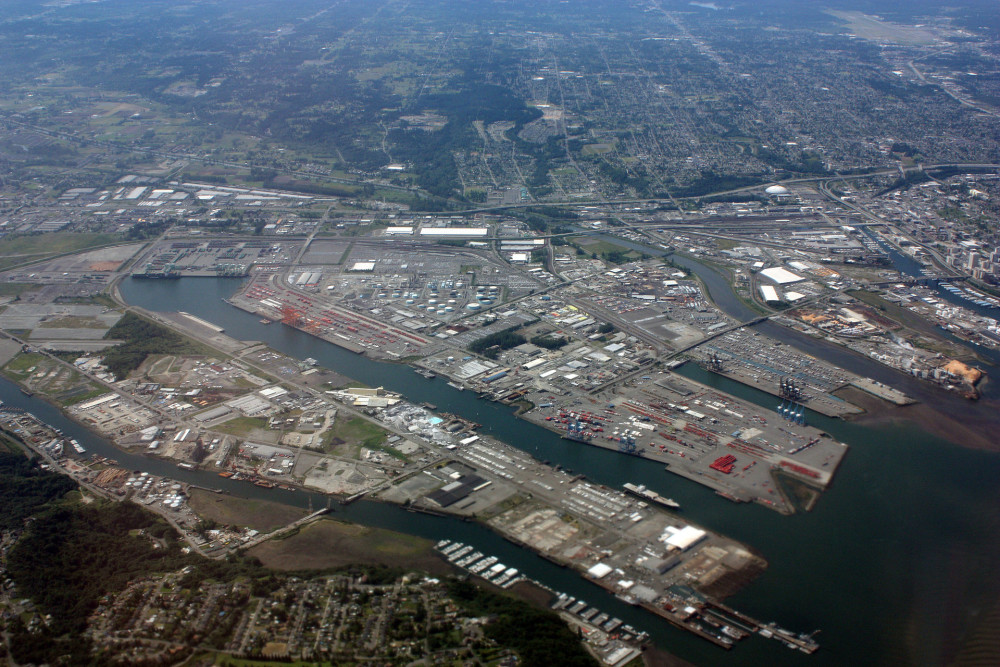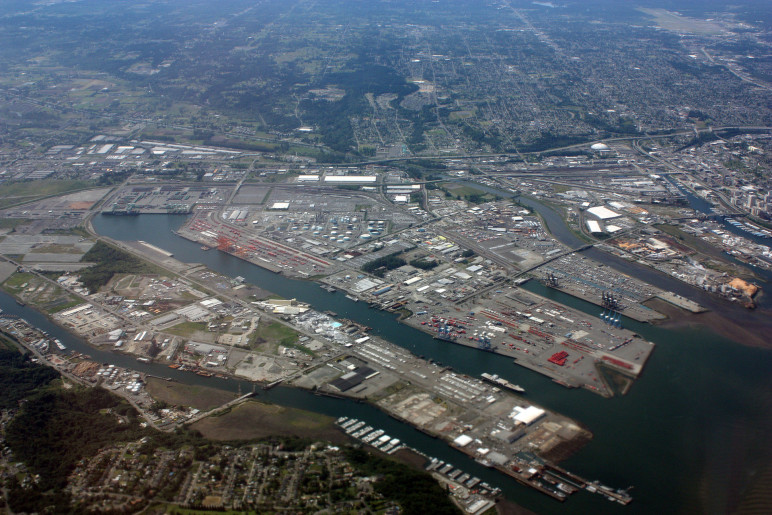There’s a modern-day monster lurking under Tacoma’s industrial lands. Mixed in with the groundwater is a stew of pollution from a shuttered chemical plant: PCBs—toxic chemicals the EPA banned in 1979—and volatile organic chemicals so alkaline that it’s actually stronger than drain cleaner and, according to the company responsible, is actually dissolving rocks into jelly.
The core plume of toxic chemicals under the Tacoma tideflats is as tall as the Seahawks stadium and more than four times as big in area—and it may be inching its way toward the waters of Puget Sound. The cleanup for Occidental Chemical, or OxyChem as it’s known, is the last big remediation in Tacoma, a city that is undergoing a remarkable rebirth and transformation from its sometimes noxious past. But the company responsible may get away with a half-hearted treatment.
The core plume of toxic chemicals under the Tacoma tideflats is as tall as the Seahawks stadium and more than four times as big in area—and it may be inching its way toward the waters of Puget Sound.
OxyChem is a wholly-owned subsidiary of Occidental Petroleum, a multinational oil and gas company based in Texas. Its Tacoma facility was built in the late 1920s on the shoreline of the Hylebos Waterway, where for nearly 80 years a chlor-alkali plant produced a range of caustic chemicals for industrial uses, including sodium hydroxide and chlorine. Decades of poor management on the site resulted in profoundly contaminated soil, along with groundwater that now threatens Commencement Bay and Puget Sound. If the pollution reaches a waterway—and there is reason to worry it will—it would pose a direct hazard to salmon, shellfish, and even the orcas that frequent the south Sound.
Complicating matters, manufacturing chemicals from the OxyChem cleanup location have migrated over time to the planned building site of a liquefied natural gas (LNG) facility on the Hylebos, a development that could well unleash a new array of pollution hazards. Portions of the site are within the footprint of the OxyChem cleanup site and contain groundwater tainted by industrial solvents including vinyl chloride, which is associated with brain cancer, leukemia, and other illnesses.
In December 2015, the local Puyallup Tribe mounted a legal challenge, arguing that the environmental analysis of the LNG proposal did not address key questions about whether construction would result in potentially serious water contamination from OxyChem’s legacy pollution. (The LNG project backers subsequently eliminated their plans to build a vessel fueling station on the Hylebos.)
After years of study, the Washington Department of Ecology has narrowed down its cleanup plans for the site. Yet many environmental advocates believe that none of the options is sufficient. One local group, Citizens for a Healthy Bay, has excoriated the plan for being too lenient, offering only choices that are comparatively cheap rather than effective. OxyChem itself is pushing for a plan that would cost them about $80 million over the course of 30 years (less than $2.7 million per year) while treating not even half the pollution. Meanwhile, the company annually makes 200 times more money than that figure, reporting pre-tax profits of $152 million in the fourth quarter of 2016 alone.
By a curious turn of history, OxyChem is linked to Love Canal, one of the best known environmental disasters in American history, in which hundreds of people were exposed to staggering levels of toxic contamination after a neighborhood and school were built essentially on top of a chemical waste landfill. In 1995, OxyChem ultimately agreed to pay restitution of $129 million ($206 million in today’s dollars) after a federal judge found the company negligent in handling the waste and selling a dump site to the Niagara Falls School District.
The severity of the Love Canal disaster was a major contributor to Congress passing the “Superfund” law in 1980, which pays for cleanups and holds polluters at least partially responsible. It is a curious irony that the company whose reckless pollution engendered a landmark federal cleanup law is now trying to wriggle off the hook in Tacoma.
Washington Department of Ecology is accepting public comments on its draft cleanup plan until April 27. (You can email them to kerry.graber@ecy.wa.gov.) In the meantime, Citizens for a Healthy Bay is hosting a public forum and expert panel to discuss the matter at the University of Washington-Tacoma on April 5 from 6:30-8:30pm.
Thanks to reviewers Tarika Powell at Sightline Institute, Sheri Tonn at Pacific Lutheran University, and Melissa Malott and Ryan Cruz at Citizens for a Healthy Bay.












Jan
Same in Anacortes. Citizens just subsidized a $2.3m “third remediation” at Shell’s former tank farm. Surprised we have three high-incidence cancers? Ecology is a joke.
Jane socie
I have evidence of county n state employees dumping garbage n concrete in a local river..this has been reported to the county n the epa.
Nothing gets done..